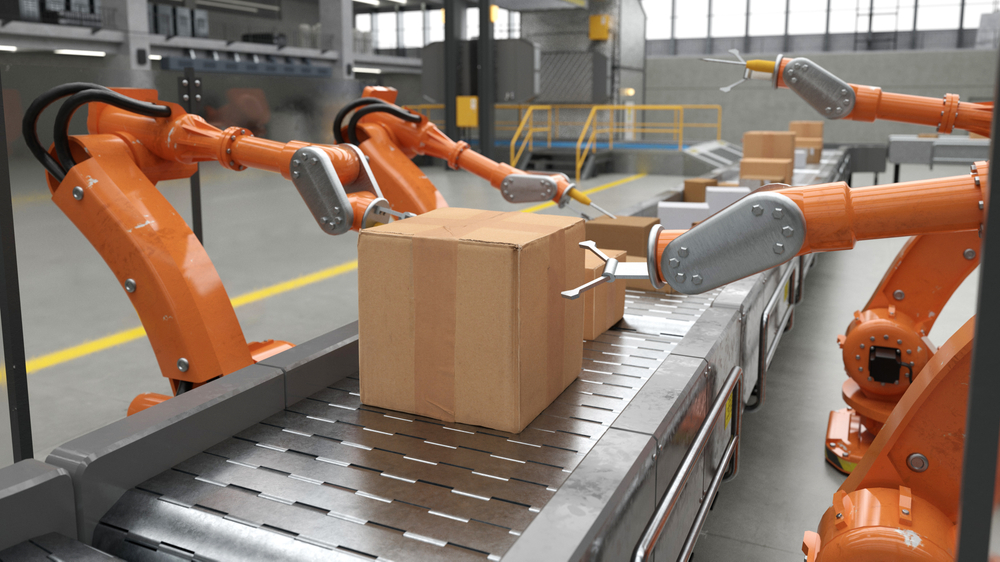What are the benefits of robotic arms in manufacturing?

Technology has revolutionised manufacturing processes over the past few decades, allowing for greater efficiency and production speed. Introducing robotic arms into industrial settings has furthered this trend, providing a way to streamline tedious tasks in manufacturing operations while increasing productivity and cost savings.
In this article, we’ll be discussing the advantages of using robotic arms in industrial settings – from improved quality control to freeing up resources for other activities – so that you can better understand how these machines are transforming modern-day manufacturing.
An introduction to robotic arm technology and its potential applications in the manufacturing sector
The emergence of robotic arm technology has revolutionised the manufacturing industry, offering a new level of precision and accuracy in production processes. Unlike traditional manufacturing methods, where heavy machinery and manual labour is used, robotic arms are capable of functioning independently, carrying out repetitive and intricate tasks with ease. These “smart” machines are programmable and can be adapted to perform various functions, making them ideal for mass production of products.
Beyond manufacturing, robotic arm technology has the potential to be applied in other sectors like healthcare and agriculture, as it offers a range of benefits that include improved safety, increased efficiency, and reduced costs. As the new wave of automation sweeps the world, it is evident that robotic arms technology will continue to play a pivotal role in shaping industry standards.
A look at the cost savings associated with using robotic arms instead of manual labour
One of the most significant advantages of using robotic arms in manufacturing is the cost savings it brings. While initial investment costs may be higher, these machines are designed to work continuously and with high precision, reducing the need for a large workforce and minimising human error. This results in reduced labour costs and increased productivity, leading to significant cost savings for companies.
Robotic arms can also work in hazardous environments, eliminating the need for human workers to be exposed to dangerous conditions. It not only reduces the risk of workplace injuries but also saves companies from potential legal and insurance expenses.
Advantages of using robots instead of people in manufacturing plants
Aside from cost savings, robotic arms offer numerous benefits over human workers in manufacturing plants. For starters, these machines can operate 24/7 without breaking or shifts, ultimately increasing production speed and output. They are also equipped with sensors that ensure precision and accuracy in their movement, leading to improved quality control.
Additionally, robotic arms do not require breaks for rest or meals, allowing for continuous production and eliminating the need for employee downtime. It also means these machines can be used in areas with limited space, making them ideal for small-scale manufacturing plants.
The safety benefits that come with deploying robots in the workplace
One of the primary concerns in any workplace is safety, and this is especially true for manufacturing plants. In traditional manufacturing methods, heavy machinery and manual labour are often involved, posing significant risks to workers if not operated correctly. However, with the introduction of advanced robotic arms, these risks can be significantly mitigated.
Robotic arms offer a remarkable solution to workplace safety in manufacturing plants. By taking on tasks that previously required human intervention, they eliminate the risk of physical harm to workers. It not only ensures the well-being of employees but also contributes to a more productive and efficient work environment.
The implementation of robotic arms in manufacturing processes goes beyond just ensuring safety. These automated systems also play a crucial role in minimising product defects caused by human error. With their precise and consistent movements, robotic arms reduce the likelihood of mistakes during production, resulting in improved product quality and higher customer satisfaction.
The speed and accuracy of robotic arms compared to manual labour
In addition to safety and cost savings, another significant advantage of using robotic arms in manufacturing is their speed and accuracy. These machines are designed to work at high speeds without sacrificing precision, making them ideal for mass production.
Compared to manual labour, where human error and fatigue can lead to mistakes and slow down the production process, robotic arms offer consistent performance with minimal downtime. It allows for faster production and increased output, ultimately leading to improved profitability for companies.
Potential issues associated with using robotic arms in manufacturing, including cost, maintenance, and more
While the benefits of using robotic arms in manufacturing are undeniable, there are some potential challenges and issues that need to be considered before implementation. The initial cost of purchasing and installing these machines can be high, making it a significant company investment.
Furthermore, as with any technology, there is also the risk of technical malfunctions or errors, which require skilled technicians to fix and potentially result in downtime. Companies need to factor in these potential costs and challenges when considering implementing robotic arms in their manufacturing processes.









